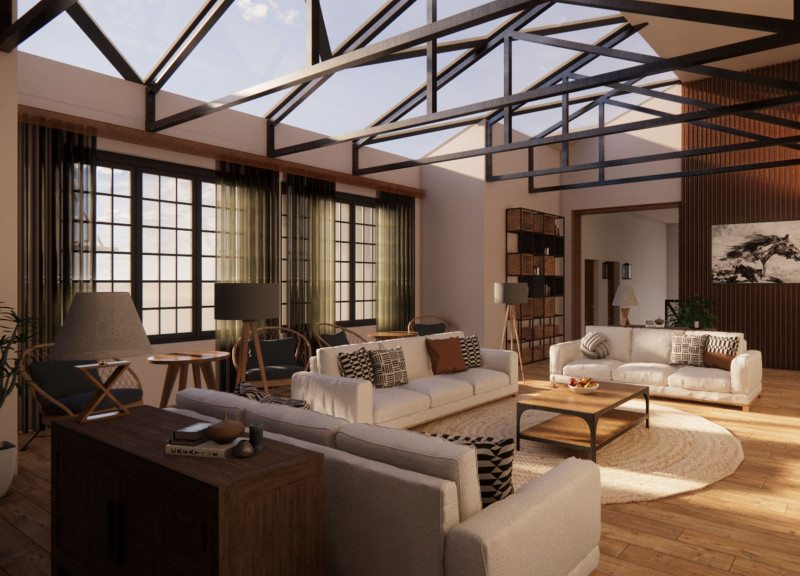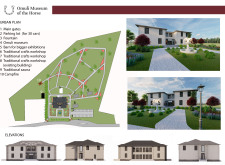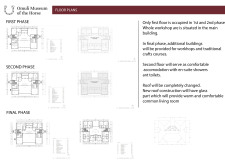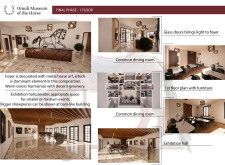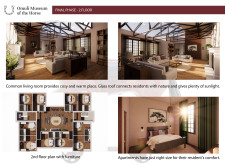5 key facts about this project
Key elements of the project include a main museum building, a barn designated for larger exhibitions, several workshops for traditional crafts, a common dining area, and outdoor spaces to foster interaction. The thoughtful arrangement of these components ensures a seamless flow for visitors, enhancing user experience and engagement with the exhibits.
Unique Architectural Elements
The architectural design features a blend of traditional and contemporary styles. The choice of materials, which includes natural stone, rendered concrete, and wood, underscores an intention to create a harmonious relationship with the surrounding landscape. Large windows are strategically placed to maximize natural light, which not only illuminates the interior spaces but also connects occupants with nature.
One distinct characteristic of the museum is the integration of a glass-roofed common living space on the second floor, aimed at fostering a close connection between the indoor environment and the outdoors. This unique design approach allows for an enjoyable experience for visitors and residents alike, encouraging social interaction and relaxation.
Community Engagement and Educational Focus
The museum is designed to function as more than a traditional exhibition space; it incorporates community-driven initiatives such as workshops that promote traditional craftsmanship associated with equine culture. The inclusion of a sauna and campfire area caters to communal activities, reinforcing the project's intention to be a place for gathering and learning.
The project is executed in three phases, enabling gradual development and the introduction of additional functionalities as needed. The plan culminates in a comprehensive structure that accommodates both individual and group activities, ensuring versatile use of spaces in line with community needs.
Explore the architectural plans, sections, and designs of the Omuli Museum of the Horse to gain deeper insights into its function and unique architectural ideas. Exploring these elements will provide a comprehensive understanding of the project and its contributions to both architecture and cultural heritage.


